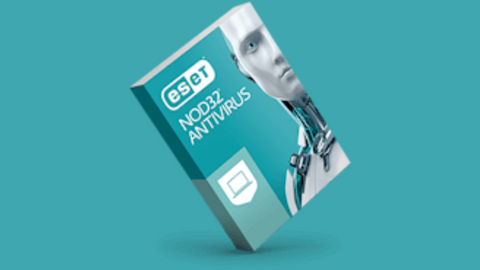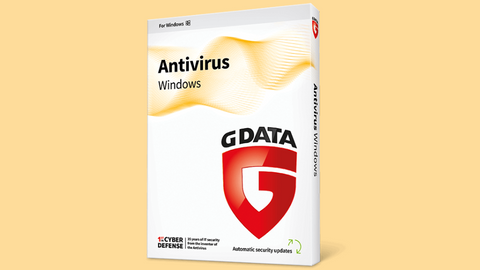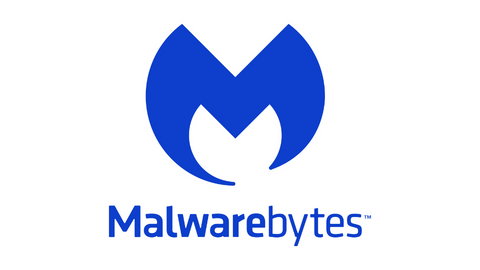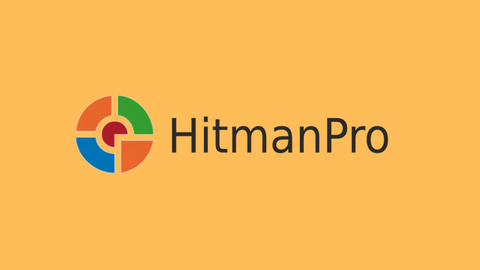Could a Keylogger be spying on you? Do you feel unsafe about your information getting leaked? Is it happening because of any virus or malware programs? Do you think that you are being spied on? How do you detect and protect yourself, then?
First, keylogging, usually considered keyboard capturing or keystroke logging, is the technique of recording and monitoring the keys typed each time on a keyboard.
So, yes, today, those people using their keyboards are unaware that their actions are being monitored, allowing any programmer to quickly collect and record the data.
MUST READ: The Ultimate Antivirus Software Guide: What Is An Antivirus?
Best Antivirus Deals
Table of Contents
What Are Keyloggers?
So, we can say that these keyloggers are the programs used to record every Keystroke smoothly and silently.
Keyloggers are very hard to detect, and because of this, they are considered a widespread problem today. Where people fear that they might fall into its trap, this program can be part of any parental control system, or used by any person, including a hacker with a criminal mindset, to obtain valuable information.
In other words, they steal confidential information that can be used against any person, even the organization and society. Nobody wants their privacy to be disturbed by data misuse like this. Therefore, detecting these keyloggers becomes crucial and can range from relatively easy to very challenging, depending on their nature and functionality.
A Keylogger can quickly spread like any other virus by opening any attached file from your Email. When a file gets launched from any direct open-access directory, or when a user mistakenly opens any spam or infected website. It could be through links when a file is downloaded from a device with a malicious program, among other methods.
In this case, everybody wants to be protected from such unsafe malware programs. Here are a few steps to easily detect and protect yourself from keyloggers.
READ ALSO: 5 Ways to Run Command Prompt on your Windows PC
Methods To Detect The Keyloggers
1. Task Manager
Checking your task manager for unfamiliar or suspicious programs can be a helpful initial step. However, keyloggers disguised as legitimate processes are increasingly common, so combining this method with others is crucial.
2. Antivirus and Anti-malware Software
Installing and maintaining reputable antivirus and anti-malware software can significantly enhance your ability to detect keyloggers. These programs actively scan for and remove malicious software, including some types of keyloggers.
However, choosing reliable and reputable software and keeping it updated with the latest definitions is essential to ensure optimal protection.
3. System Activity Monitoring Tools
Consider using specialized system activity monitoring tools that go beyond basic process checks. These tools can track changes in system files, registry entries, and network activity, potentially revealing hidden keyloggers that might escape detection by traditional methods.
4. Browser Extensions
Specific browser extensions provide protection against keyloggers by monitoring website activity and blocking malicious scripts from capturing your keystrokes.
However, these extensions should be used with other methods, as they might not offer complete security.
5. Behavioral Analysis
Be observant of your behavior. Unexplained slowdowns, unexpected pop-ups, or changes in keyboard performance can be potential signs of keylogger presence. While these might not be conclusive indicators, they warrant further investigation.
6. Look for Physical Keyloggers
In rare cases, physical keyloggers might be attached to your keyboard, mainly if you use a public computer. Visually inspect the keyboard connection point for any unfamiliar devices.
7. Stay Informed and Practice Safe Habits
Keeping yourself updated on the latest cybersecurity threats and best practices is crucial. Avoid clicking suspicious links, opening attachments from unknown senders, and entering sensitive information on untrusted websites.
Additionally, using strong and unique passwords for all your online accounts and enabling two-factor authentication (2FA) whenever available adds another layer of security.
Remember, no single method is foolproof, and a layered approach is essential for optimal protection against keyloggers. Combining these methods with caution and awareness can significantly reduce the risk of falling victim to these malicious programs.
READ ALSO: Comprehensive Malware Guide: Safeguarding Your Digital World
Methods To Prevent Keyloggers
Keyloggers are malicious software or hardware devices that record your keystrokes, potentially compromising your passwords, messages, and personal information. Fortunately, several effective methods can help you prevent keyloggers and safeguard your data.
1. Install and Maintain Reputable Antivirus and Anti-Malware Software
This is the first line of defense against various threats, including keyloggers. Regularly update your antivirus software to ensure it can detect and remove the latest malware variations.
2. Utilize a Robust Firewall
A firewall acts as a barrier, monitoring incoming and outgoing network traffic. While it cannot guarantee complete protection against keyloggers, it can potentially flag suspicious data transmissions attempting to leave your device.
3. Employ a Password Manager
Memorizing solid and unique passwords for all your accounts is challenging but crucial. Using a reputable password manager eliminates the need to remember individual passwords and automatically fills them in for you. This significantly reduces the risk of keyloggers capturing your login credentials.
4. Enable Two-Factor Authentication (2FA)
2FA adds an extra layer of security by requiring a second verification step, typically a code sent to your phone or generated by an authenticator app, in addition to your password. This makes it significantly harder for attackers, even if they can access your password through a keylogger.
5. Be Cautious with Links and Attachments
Phishing emails and malicious websites often attempt to trick you into downloading malware that can install keyloggers. Be wary of clicking on suspicious links or opening attachments from unknown senders.
READ ALSO: Up Your Game: Top Gaming Equipment Recommendations for Competitive Players
6. Practice Safe Browsing Habits
Avoid visiting untrusted websites or downloading software from unreliable sources. Look for trusted websites with secure connections indicated by a padlock symbol in the address bar and “https” in the URL.
7. Keep Your Software Updated
Software updates often include security patches that address vulnerabilities exploited by malware, including keyloggers. Regularly update your operating system, applications, and web browsers to minimize security risks.
8. Use a Virtual Keyboard for Sensitive Information
Consider using a virtual keyboard on the screen instead of the physical one on public or shared computers. This can help prevent keyloggers installed on these machines from capturing your keystrokes.
9. Be Wary of Unusual System Behavior
Pay attention to signs that might indicate the presence of a keylogger, such as slower typing speed, unexpected characters appearing in your text, or unusual pop-ups and error messages.
10. Conduct Regular System Scans
In addition to real-time protection from antivirus software, consider conducting periodic system scans using specialized anti-keylogger tools to detect and remove any potential keyloggers that may be hiding on your device.
By implementing these methods and remaining vigilant, you can significantly reduce the risk of keyloggers compromising your security and stealing sensitive information. Remember, a combination of proactive measures and responsible online behavior is essential for comprehensive protection in the digital world.
READ ALSO: What Is The Average Cost Of A Laptop?
Keylogger: Frequently Asked Questions
What is a keylogger?
A keylogger is a software program or hardware device that records keystrokes made on a keyboard. These recordings, also known as logs, can include everything typed, including passwords, messages, emails, and personal information.
Why do people use keyloggers?
While some legitimate uses exist, like parental monitoring or employee productivity tracking, keyloggers are primarily used for malicious purposes. Here are some common examples:
- Cybercriminals might use keyloggers to steal login credentials for online accounts, credit card details, or other sensitive information.
- Spies: They might use keyloggers to monitor someone’s online activities for personal or professional reasons.
- Malicious software (malware): Some malware can install keyloggers on your device without your knowledge, enabling the attacker to steal your information.
READ ALSO: 9 Things That Every Gamer Should Have For Seamless Online Gaming
How can I detect a keylogger?
Detecting a keylogger can be challenging, but here are some signs to watch out for:
- Unfamiliar software running in the background: Check your running processes for programs you don’t recognize.
- Changes in your keyboard behavior could include slower typing speed, unexpected characters appearing, or missing keystrokes.
- Unusual pop-ups or error messages might be signs of malware trying to install or activate a keylogger.
- Decreased computer performance: Keyloggers can consume system resources, potentially slowing down your device.
READ ALSO: How To Spy On Your Kid’s Online Activity And Monitor It
How can I protect myself from keyloggers?
Here are some steps you can take to minimize the risk of keyloggers:
- Install and maintain reputable antivirus and anti-malware software.
- Be cautious when clicking links or opening email attachments, especially from unknown senders.
- Use strong and unique passwords for all your online accounts.
- Enable two-factor authentication (2FA) wherever available.
- Consider using a virtual keyboard to store sensitive information on shared or public computers.
- Stay informed about the latest cybersecurity threats and best practices.
Following these precautions can significantly reduce the risk of keyloggers compromising privacy and security. Remember, remaining vigilant and taking proactive steps are crucial in protecting yourself online.
Conclusion
These are some of the relevant methods to know in today’s era, where half of the population is active online, and so is their data. Additionally, what you are typing right now also matters.
Security and proactiveness rely on the hands of the users. This Keylogger can be entered from any source and is of various forms. It is still easy to detect them, secure your device, and prevent any Keyloggers or other fraud from spying on us.
RELATED POSTS
- How To Choose The Best Password Manager
- Types Of Trojan Horses And How To Remove Them
- Adware Signs, Effects, And How To Remove It
- The Must Dos And Don’ts For Protecting Your Password And Personal Data
- How To Prevent Xiaomi From Spying On You And Stealing Your Data
- Pros And Cons Of Open Source CMS
- How To Detect Email Phishing Attempts (Like A Geek!)
- Top 5 Antivirus Platforms For Your Computer
- Apple Launches Open-source Password Manager for Developers
About the Author:
Marie Beaujolie is a computer network engineer and content writer from Paris. She is passionate about technology and exploring new ways to make people’s lives easier. Marie has been working in the IT industry for many years and has a wealth of knowledge about computer security and best practices. She is a regular contributor for SecureBlitz.com, where she writes about the latest trends and news in the cyber security industry. Marie is committed to helping people stay safe online and encouraging them to take the necessary steps to protect their data.

























